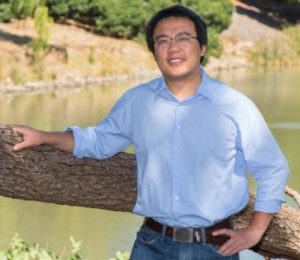 A novel technique to prevent seawater intrusion into coastal freshwater stores has earned Flinders University researcher Chunhui Lu a Vice-Chancellor’s Award for Early Career Researchers.
A novel technique to prevent seawater intrusion into coastal freshwater stores has earned Flinders University researcher Chunhui Lu a Vice-Chancellor’s Award for Early Career Researchers.
Dr Lu, a Research Fellow at the Flinders-based National Centre for Groundwater Research and Training, received the accolade at an awards ceremony last week for his contribution to develop the method, which has now been published in the leading international journal Groundwater.
Seawater intrusion is a major problem that occurs in coastal areas as a result of salt water encroaching from the ocean into freshwater storage systems below the earth’s surface, known as aquifers, contaminating the water stores.
Together with a team of Flinders researchers – led by Professor Craig Simmons and Associate Professor Adrian Werner – Dr Lu has developed a new way to stop seawater from encroaching into coastal aquifers using an injection/extraction technique.
“Ocean water has a higher density than freshwater so when inland water stores are decreased, seawater can intrude into aquifers and contaminate the freshwater,” Dr Lu, based in the School of the Environment, said.
“But the strategy we have developed injects freshwater from inland aquifers into coastal aquifers and that increases the water level and pushes seawater back into the ocean,” he said.
“It’s also a preventative measure as well because if the freshwater is kept at a high level then there is no room for saltwater to encroach further into the aquifer.”
Dr Lu said the technique would ensure Australia’s freshwater supplies were salt-free.
“More than 85 per cent of Australia’s population live within 50km of the coastline so coastal aquifers are very important for drinking and the agriculture industry.”
Dr Lu, who is now investigating seawater intrusion under more complex situations, said he felt “honoured” to receive the Vice Chancellor’s Award.
“I am very happy – I think this award will be really good for my career development.”

